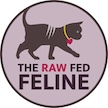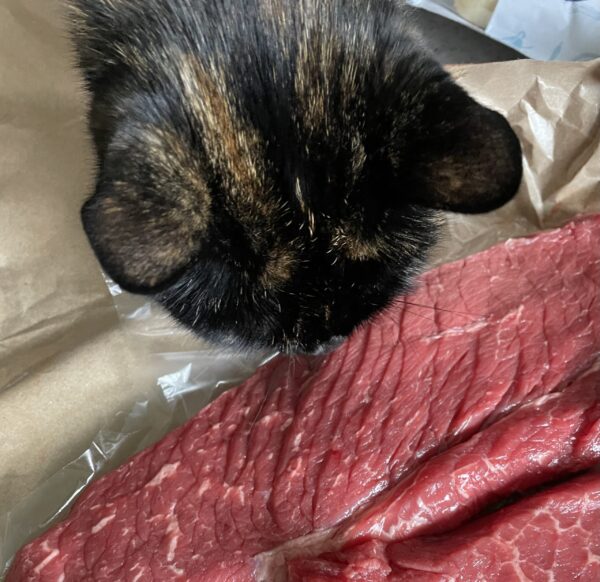Why should you feed your cat a raw diet? Where does this idea come from? I certainly had never heard of feeding raw food to pets growing up. It wouldn’t have occurred to me to do so. But there is so much more awareness about the connection between diet and health now. We know that eating whole, fresh foods and having a minimally processed diet is better for people. It makes sense that the same would be true for other animals, too, including our cats. So what is the natural diet of cats?
Cats are carnivores
All cats (even our domesticated pet cats) are obligate carnivores, which means that they must eat meat. Cats have unique nutritional requirements for protein, specific amino acids, and vitamins/minerals that can only be met by eating a meat based diet.
In nature, cats eat a variety of prey animals available in their environment, mainly rodents, small birds, lizards, etc. They consume the whole animal—the meat, bones, organs, glands, blood, and fur/feathers. Plantinga looked at what our cats’ feral counterparts eat. They found that cats eat whole prey animals with a macronutrient make up of 52% protein, 46% fat, and 2% carbs. These prey animals are also made up of 70-80% water. This is the basis of the natural diet of a cat. Just because we brought cats inside our homes does not mean that their nutritional needs have changed in any way.
Most of us in the US keep our cats indoors for safety reasons and are not feeding them whole prey animals (more on that topic to follow!). But we can offer our cats the meat based raw diet that they are designed to eat by feeding balanced raw food. Raw feeding attempts to recreate the natural diet of the cat by offering meat, bones, organs, and other nutrients that cats would naturally consume from eating whole prey.
In the wild, all cats, big and small, eat other animals—raw. Raw feeders commonly joke that cats don’t cook mice over a campfire, which is a funny visual, and of course, true. Feeding a balanced home cooked diet to your cat can be a better option than many commercially prepared foods, but cooking does alter food in ways that are not optimal for cats. Cooking changes the composition of meat, destroys the beneficial enzymes, and can create inflammatory compounds. There are essential vitamins, especially thiamine, that are sensitive to heat, which are destroyed by the cooking process as well.
Benefits
When cats are fed a raw diet, you can see some pretty amazing health benefits because you are working with their bodies instead of against them. For example:
~shiny, glossy fur with minimal shedding,
~clean, white teeth,
~appropriate weight and body condition,
~lots of energy,
~and an absence of many of the common health issues facing so many cats today.
Health issues such as diabetes, obesity, urinary tract diseases, irritable bowel syndrome, cancer, kidney disease, chronic vomiting and hairballs, etc., became “common” in cats when we started to stray ever farther from their natural diet. Basically, when we started feeding them dry food. Dry food is ultra processed, has lower bioavailable protein, way too many carbohydrates, and not even close to enough moisture. The exact opposite of cats’ natural diet.
When we feed our cats a raw, minimally processed, meat based, moisture rich diet, we are supporting their overall health and vitality. This is the diet they can thrive on—and isn’t that what we all want for our beloved cats?


